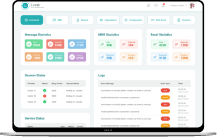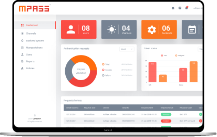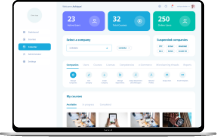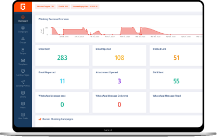How could Artificial Intelligence tools threaten cybersecurity?
As Artificial Intelligence Tools become more sophisticated, they can be used to launch cyber attacks that are more complex and difficult to detect. In this article, we will explore how AI tools could threaten cybersecurity and what measures can be taken to mitigate these threats.
Artificial Intelligence (AI) became popular today, and it is one of the most important terminologies in our current era, though it has been around since the 1950s.
AI relies on the development of systems and technologies that help to do tasks by the simulation of human intelligence and thought.
ChatGPT is one of the most popular examples of these AI tools today.
Which caused remarkable international interest during 2023.
In this article, we will explore and focus more on its impact on cybersecurity.

What is ChatGPT?
ChatGPT is a machine learning technique called deep learning that generates logical and comprehensible responses to conversations developed by OpenAI. ChatGPT’s continuous learning and improvement is achieved by training the model on a large amount of language data – Large language Model (LLM), and when activated in dialogues, ChatGPT can understand the content of the dialogue and generate meaningful responses, so it can be used in a wide range of fields, including customer service, education, media, marketing, designing, translating and in other fields.
What is the Artificial Intelligence tools?
Artificial Intelligence tools working mechanism depends on training it on a very large set of linguistic data, such as books, articles, and websites. This necessary so that the model can learn linguistic and typological relationships in texts.
Artificial Intelligence tools were also trained by entering long texts and using the model on a specific task, such as the task of predicting the next word in the text.
When you run any of the Artificial Intelligence tools on a specific text, the text is converted into a set of numbers and mathematical data that the model recognizes, based on the language rules the model learned during training, it generates the new text. AI tools can be used to create different texts such as articles, poetry, novels and even writing an e-mail.
Artificial Intelligence tools are a useful template for several services, such as making marketing plans, answering customer questions, and creating content. It is widely used in various fields such as digital marketing, translation, e-learning, and even in producing voiceover, creating designs, and many other services.
Despite its benefits of AI tools, it can be used for illegal activities that could threaten cyber security. Let us learn about these threats and risks.
What are the risks of using Artificial Intelligence tools on cybersecurity?

- Penetration:
This technology can be exploited to hack systems, due to many factors that may lead to their vulnerability. Among the reasons that can lead to hacking risks via Artificial Intelligence tools are:
Chatbots that use Artificial Intelligence tools can be exposed to several security vulnerabilities that attackers can exploit to enter the system and get sensitive information.
Artificial Intelligence tools can be used to create professional level fake e-mails and fraudulent actions, and this technique can convince users to give out sensitive information such as passwords and financial data.
Artificial Intelligence tools can be used to perform social engineering operations, where attackers can use this technique to manipulate users and get personal information from them.
- Vishing:
Artificial Intelligence tools can be used for voice recognition, which is known as “voice triggering”, as this technology is often used to generate fake voices for fraudulent acts.
- Malware:
Artificial Intelligence tools can be used to create malicious programs, as attackers can do so.
It can be used to create emails or multimedia text messages that appear from real and trusted sources. Victims are persuaded to provide sensitive information such as logins, passwords, or financial information. When victims provide this information, it can be used for fraud and hacking.
- Artificial Intelligence tools can also be used to create fake website pages in a professional way that appears as if it is real trusted websites. It can be used to collect sensitive information or install malware on victims’ devices.
- Artificial Intelligence tools can be used to conduct marketing fraud. This is where misleading advertisements and marketing content are created to convince people to buy unreliable products or services.
- Targeted Cyberattacks:
Intelligent technologies such as AI tools can be used to carry out targeted attacks on specific targets, such as companies and institutions, by:
- Obtaining sensitive information:
Artificial Intelligence tools can be used to mislead users that data is being collected from them for legitimate purposes, allowing attackers to get sensitive information about them and use it in future attacks.
- Avoid detection:
Attackers can use AI tools to communicate with victims, making it difficult to identify the source of the attack and verify the validity of the information exchanged.

Some other risks of using Artificial Intelligence tools.
- Discrimination and Prejudice:
It can be biased against specific categories of users and give more opportunities and privileges to other groups.
- Mistakes:
The use of AI tools can lead to grammatical errors in the responses it provides or even having outdated information, and this error can lead to misunderstandings and wrong actions or giving wrong answers due to old information.
- New Threats:
Smart technologies may lead to new threats in cybersecurity, as some smart systems may become vulnerable to hacking and exploitation.
How can Artificial Intelligence tools dangers be avoided?
To avoid these risks, users should be careful and attentive when interacting with suspicious messages or web pages. They should always verify the source before providing sensitive information.
Companies and organizations should develop strong security procedures and technologies to protect users’ data and address electronic fraud used in AI tools.
Conclusion:
The impact of Artificial Intelligence on cyber security can be positive or negative depending on how the technology is used.
For example, it can be used in distance learning and training, in improving the experience of customer service, providing quick and effective answers to them, in improving digital marketing and translating texts from one language to another, simplify the designing processes, and many other useful uses. It can also help in taking huge logs, security data, network traffic and analyze such information to find out about new vulnerabilities or attacks not being recognized.
But the negative uses of AI tools are through impersonation, creating texts that contain abuse and incitement, and creating fraudulent texts that lead to deception and harm to users.
Thus, artificial intelligence represents a challenge to cybersecurity, and it is important to take the necessary measures to reduce potential threats and maintain the integrity of computer and technical systems.
Organizations can introduce to their employees phishing simulations to reduce successful attacks while educating them.
And this is what Cerebra offers you, as it provides you with technical products and works to develop modern technologies for cybersecurity.
Share this article:
Popular

Keeping Our Kids Safe Online
A Guide For Keeping Your Kids Safe Online Parents and all who are concerned about the well-being of our young kids in this digital world. Today we will discuss a topic of utmost importance: digital safety for kids. Yes, the Internet can be a very dangerous place for our young kids , especially with the spread of phishing scams. So, let us dive deeper and present to you, in this comprehensive article, a comprehensive guide on digital safety for kids. What every parent needs to pay attention to. Internet risks for kids: The internet has become a big part of ...
17th Jul 2024
Could you be hacked through Slack?
Could you be hacked through Slack? The usage of collaboration platforms such as Microsoft Teams and Slack has significantly increased, with nearly 80% of employees utilizing them. These platforms are designed to be convenient and easily manageable for daily conversations within organizations. However, what makes them easy and convenient also renders them vulnerable to cyber threats and attacks. In 2021, for instance, 780 gigabytes of data from the gaming giant Electronic Arts (EA) were breached through Slack! During the same year, a security vulnerability in Microsoft Teams was exploited to launch a widespread cyber attack on ...
12th Jun 2024
Tips To Be Cyber Protected While Traveling
Goodbye worry! A safe journey in the digital world With all the modern wonders of the digital world, we trust communication technologies on our journeys. There is no doubt that the travel experience is always more beautiful and enjoyable, but it can also pose a range of risks, especially when it comes to cybersecurity. Travelers may fall victim to phishing, Wi-Fi network spying, and theft of their personal data, which can make their journey filled with worries and tension. With the increasing prevalence of cyber threats, it is essential for travelers to follow some guidelines to protect their devices and ...
1st Apr 2024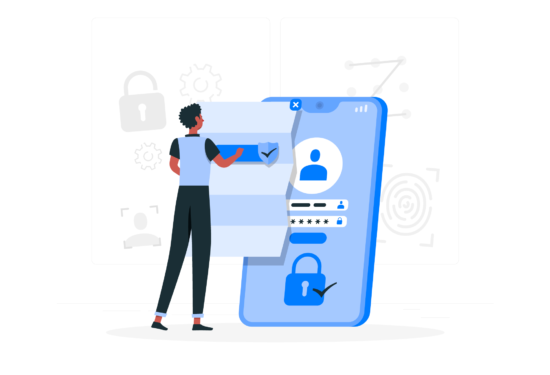
Push Authentication: A New Era in Multi-Factor Authentication
Want To Say Goodbye To Passwords and OTP Codes? Discover Push Authentication! It is easy for your password to be compromised through phishing attacks, even if it meets the cybersecurity strong password standards and is difficult to predict So we must get to know the technique of Push based Authentication. Some may recommend that you use Multi-Factor Authentication (MFA) to increase your security. Multi-Factor Authentication (MFA): MFA is the process of logging into your account through multiple steps. It requires you to enter more information, not just your password. But there is another obstacle that arises when using such ...
14th Feb 2024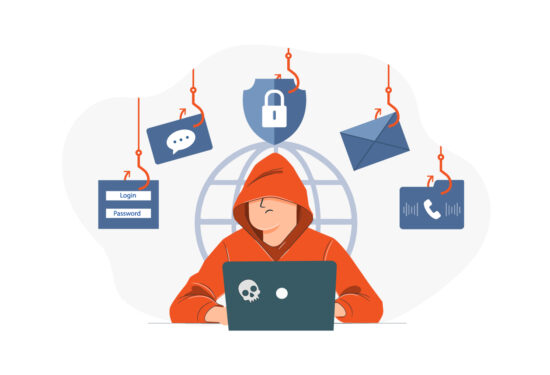
The Difference Between Phishing Attacks
The Difference Between Phishing Attacks Phishing attacks are harmful attacks used by criminals to steal personal and financial information from individuals and businesses. Attacks on individuals and businesses are becoming more common as we use the internet and technology more often in our daily lives. Phishing attacks involve the use of dishonesty and fraudulent methods to fool consumers into believing they are interacting with the trustworthiness of an unsuspecting destination, such as banks, email companies, or social media platforms. But what is the difference between phishing attacks? How can individuals and organizations protect themselves from such attacks? That is what ...
17th Jul 2023
Understanding of the Vishing Meaning
Understanding of the Vishing Meaning Vishing, a combination of “voice” and “phishing,” is a sophisticated form of cybercrime that exploits voice communication to trick individuals and extract sensitive information. In this comprehensive guide, we will explore the meaning of it, the dangers associated with it, and effective methods to protect yourself against these malicious attacks. What is Vishing meaning? Vishing refers to the fraudulent practice of using telephone services to trick individuals into revealing personal and financial information. Scammers often pose as trusted organizations or individuals to gain their victims’ trust. By using social engineering tactics and manipulating ...
5th Jul 2023
Cerebra is participating at GISEC 2023
We are thrilled to announce that we are going to GISEC 2023 and would like you to join us! Visit Cerebra at GISEC 2023 Hall #4 stand SP62 in Dubai World Trade Center from 14-16 March. GISEC Global is the leading gathering ground for the cybersecurity community worldwide. Top cybersecurity enterprises from 40 countries, CISOs from major corporations across the Middle East, Africa & Asia, government dignitaries and cyber leaders, regional and international innovators, and global experts collaborated to lead cybersecurity transformations across sectors and nations decisively. Get a chance to preview our latest Cybersecurity products: PhishGuard is the Phishing stimulations solution that raises the employees cybersecurity awareness ...
13th Mar 2023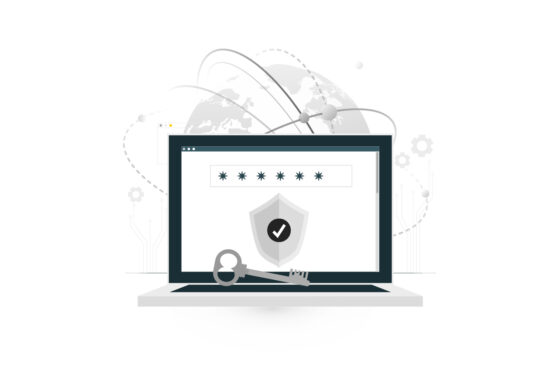
6 Tips to create a strong password easily!
Create a strong password easily! Today it’s very important to everyone who have an account either on social media or any other websites or services to Create a strong password, because you have to treat your password as your best stuff’s and protect it from others. Learn now the easiest and best tips you have to follow to make a strong password.. What is Password? A password is a string of characters that provides access to a digital system or service. It is a crucial security measure that helps to protect sensitive information from unauthorized access. Passwords can be as simple as a word ...
1st Feb 2023
Employees and cyber security: dangerous statistics about Phishing
Employees and cyber security The relationship between employees and cyber security this days must be tight and your company have to give it the right care if you want to keep your data and your business secure.. According to insights from our leading Phishing simulation tool PhishGuard, 58% of users in Saudi Arabia have opened at least one phishing email. These insights reveal that at least one out of four employees have interacted with a phishing email, either by clicking on a link or downloading a malicious attachment. In some cases, employees have gone further and submitted their personal information ...
26th Oct 2022
